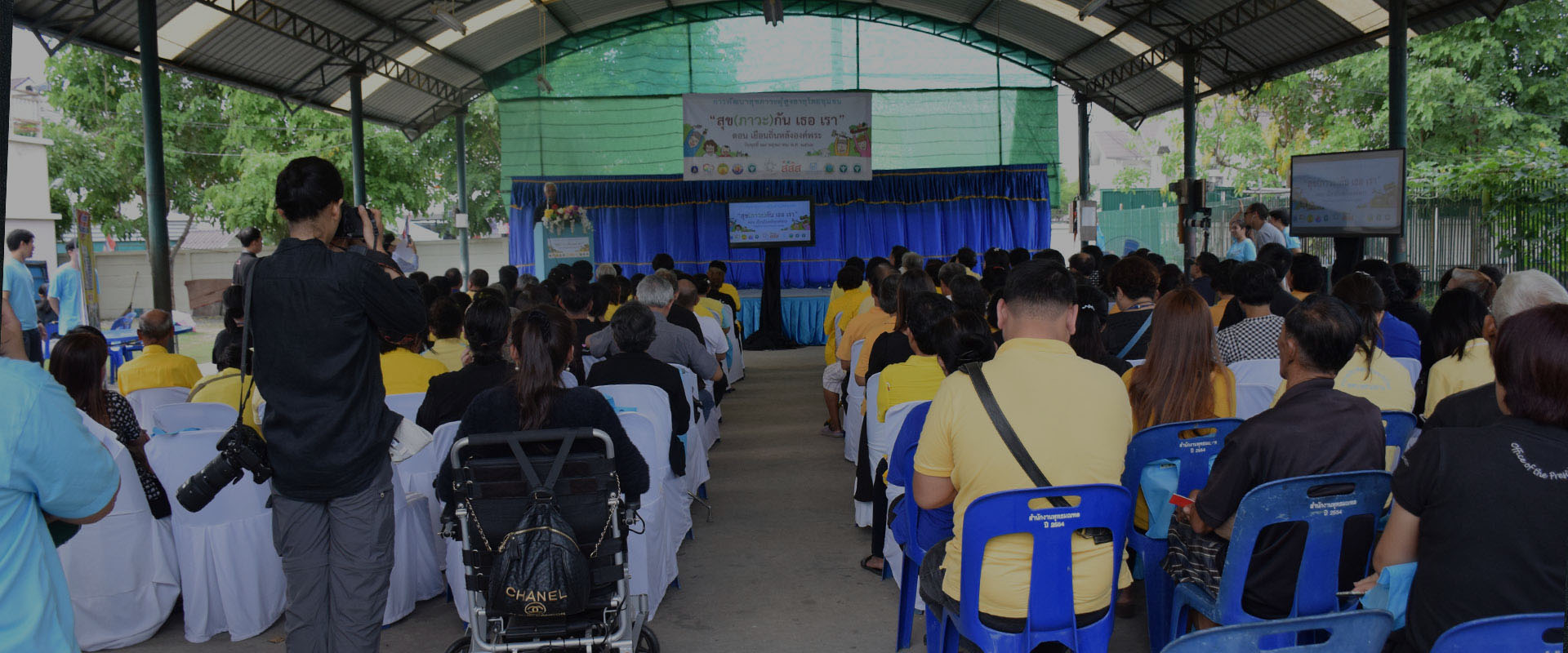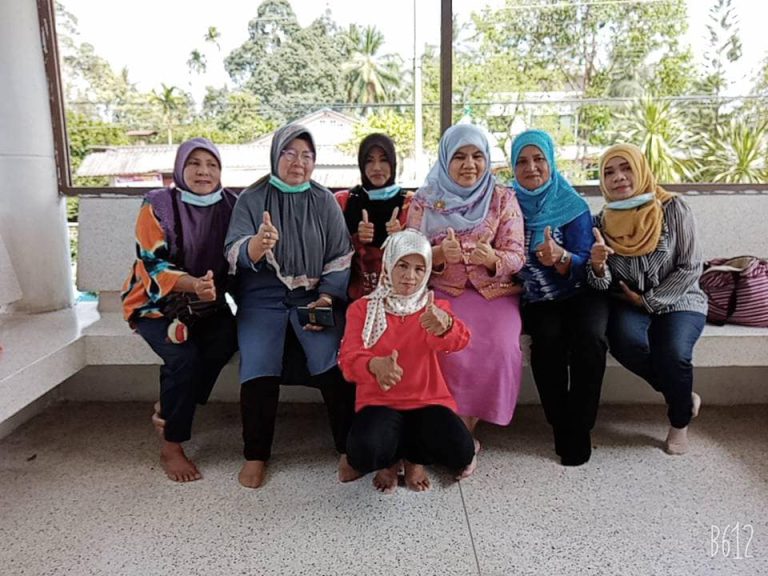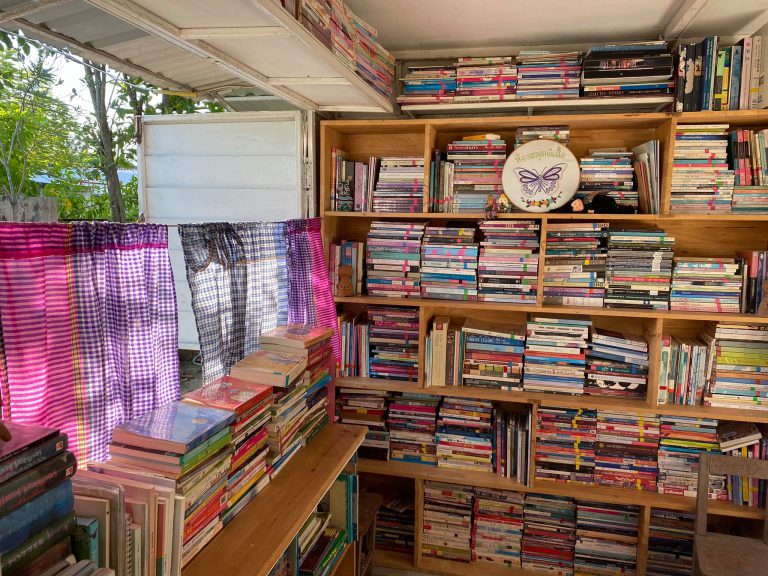Story: Sarinthorn Ratjaroenkhajorn
On the May 29th, 2019, the Arsom Silp Institute for the Arts, Thai Health Promotion and partner organisations held an installment of the “You and I, (Being) Happy Together,” seminar series titled “Yuen Thin Lang Ong Phra” (“Visiting the Place Behind the Buddha Image”). Hosted in the communal area of the Baan Uea Arthorn Neighborhood (on Phutthamonthon Sai 5 Road, Amphoe Sam Phran, Nakhon Pathom), the seminar brought together four model communities of collective well-being and invited members from these communities to meet and learn from one another.
In addition to facilitating conversation between these four communities, the seminar was also an opportunity for the communities to present the stages of development in detail. There were workshops on each respective community, and products made by their senior members for sale. Though rivulets of sweat poured down the bodies of the participants on that hot and humid morning, the atmosphere was lively and spirited, with the Suntharaporn band’s music — a familiar favorite of the senior participants — filtering through the air.

This year (2019), Thailand will have a greater number of senior citizens than children. In but another two years, experts predict that Thailand will have transitioned into a fully aged society, with senior citizens representing 1 out of 5 of the total population. It is imperative that the private, public and civil sectors of society recognize this change and prepare for the growth of the senior population. That being said, local communities must ally with seniors that are still in good health to support and care for one another, as illustrated by the four model communities at the seminar. The communities each have the following characteristics:
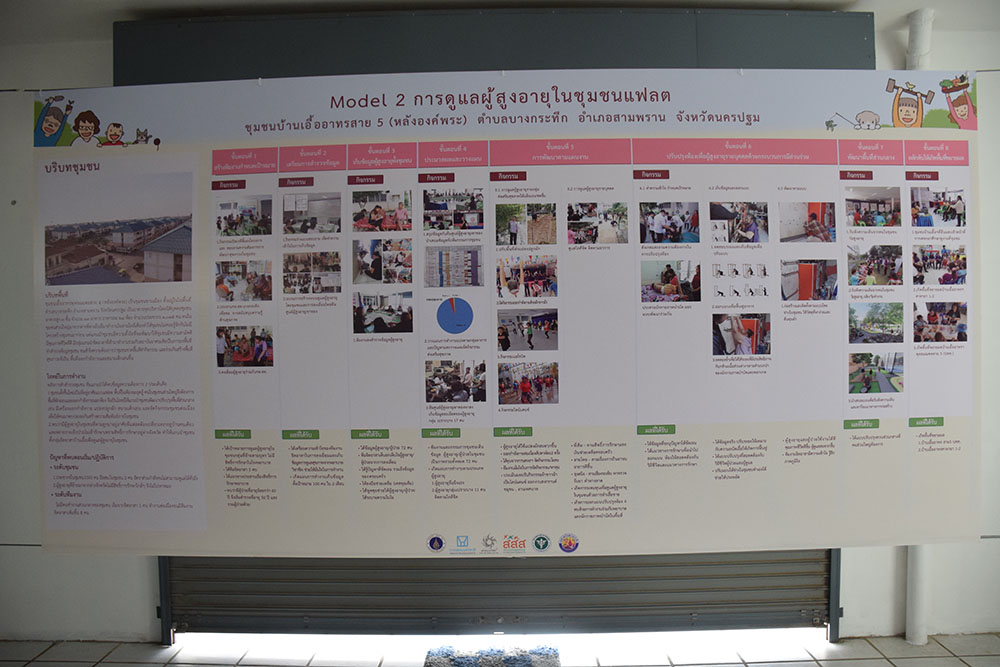
The Uea Arthorn or “Lang Phra” Community on Phutthamonthon Sai 5 Road is a residential complex of 33 flats with 790 rooms in total. Since the community members come from many different areas of the country, they have a tendency to keep to themselves and do not know each other well. Therefore, community volunteers began the process of bringing the community together by going door to door to ascertain the number of seniors and immobile, bedridden residents in the complex. Once they had collected the necessary information, consultations and discussions with the community and supporting organisations could begin. The process led to a series of activities aimed at gathering and building connections between the community members. They went on to renovate apartments, outfit the area with railings for the elderly and disabled, establish a community garden and improve community access to medical care.

The Khao Thong Community in Nakhon Sawan province emerged from the mobilization of local community organisations, nurses, monks, senior residents, researchers, the village leader, volunteers and Mahidol University, which has a campus close-by, to address the medical needs of sick senior residents unable to access a doctor and proper treatment. A survey found that seniors comprise 19.21% of the total community, and that 37 of these seniors had no one caring for them. The results galvanised a range of community initiatives, from providing medical care to sick, elderly and disabled members at their homes to renovating their living spaces. The most pressing concern — that many seniors don’t have cars and were unable to travel to the hospital to get treatment or medication — was soon solved with proper awareness and the right information. There are, in fact, many neighbors with cars, willing to volunteer a ride, and the issue was easily solved.
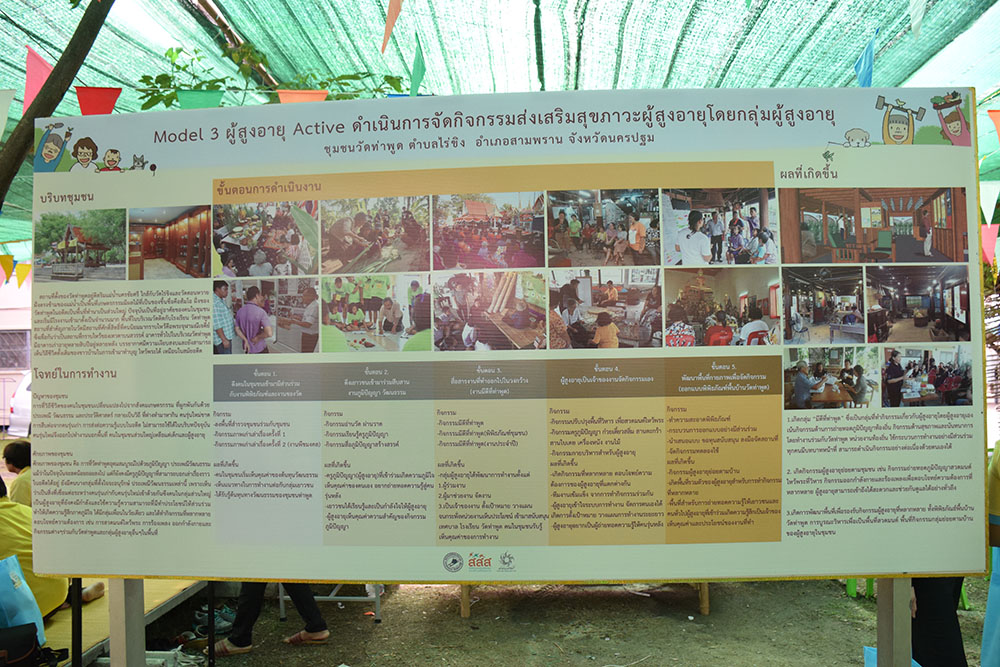
The Tha Phut Community in Amphoe Sam Phran, Nakhon Pathom has a rich heritage of traditional knowledge enshrined at the Wat Tha Phut local museum on the banks of the Nakhon Chai Si river. The renovation of the museum propelled the revitalization of the community as seniors became heavily involved, ultimately bringing people from all spheres of the community into the effort. The movement eventually coalesced as the “Mee dee tee Tha Phut” organisation, led by Ms. Somkuan Khongpracha, a volunteer and retired teacher. The beginning of her retirement had brought her to the precipice of depression. “I was the oldest person in the school and felt like I no longer had any value. However, once I became involved in community support initiatives for the seniors in Tha Phut I found that I was one of the youngest of the group, and still healthy and strong. So, I decided to lose weight to become more mobile and be better able to the seniors in our community.”

The Baan Kleung Community in Nakhon Ratchasima was founded after a survey found that there were many children and seniors in the community, whereas working-age adults had migrated to the city for work. There weren’t spaces and opportunities for the community members to gather with one another.
Once the results of the survey came out, it was generally agreed upon that there should be a health park in a central area between the 5 neighborhoods in Baan Kleung. With a limited budget, a coalition of seniors and other members of the community came together to build a health park with walking/running paths, exercise equipment, an area for activities etc. by themselves. They created a space where community members could come to exercise and organise various activities, such as a basket-weaving or cooking classes in local sweet and savory dishes such as “Mee Korat” (Korat-style stir-fried noodles), that allow senior residents to pass down their knowledge to the children in the community. These activities not only make seniors feel like a valued part of the community but also revive and preserve local arts, culture and knowledge for future generations.

The key to the success of these four model communities is step-by-step implementation and systematic organisation, with the integral support of the Arsom Silp Institute. Their process can be broken down into three main principles: information gathering, information sharing with the community, and community involvement.
Surveys and data-analysis can help communities arrive at a clearer picture of themselves; they understand their problems, circumstances and the other members of their community. Sharing the information collected with the community brings everyone on board and builds community participation, ensuring that community activities or problem-solving initiatives directly respond to the needs of everyone in the community.
The next step for the Arsom Silp Institute’s project is to create nine more model communities.There will be opportunities for the budding communities to exchange knowledge and experience with the first four communities, which will act as mentors, providing examples and advice.
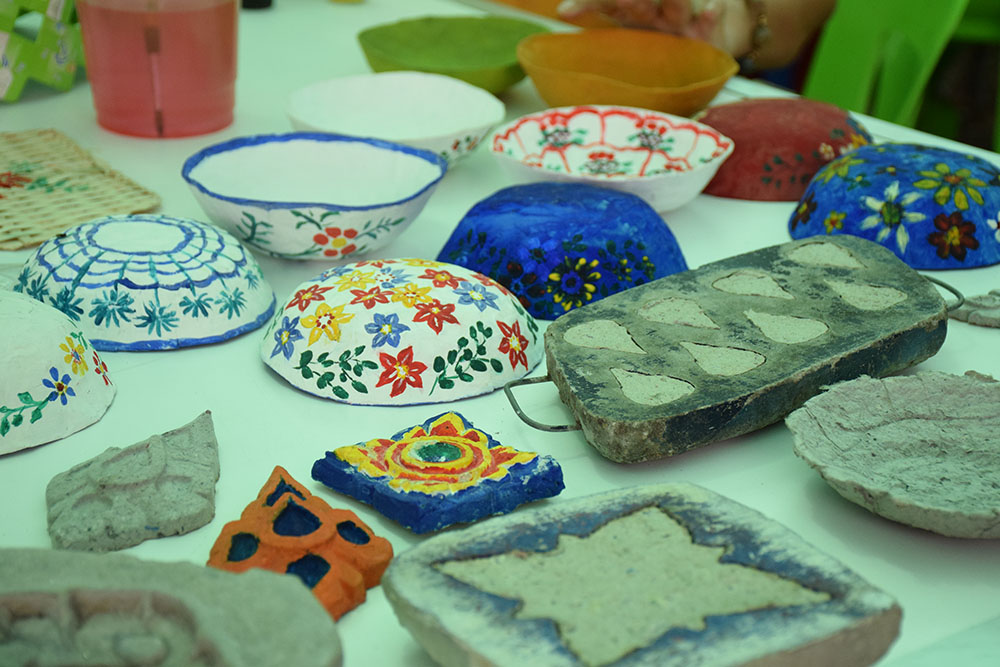
The first four model communities clearly depict the principles of compassionate community (a similar framework) in practice. Examples include the consideration of the needs of the elderly the value given to local cultures and traditions, the incorporation of local organisations and participation of seniors with special needs.
A discussion with an experienced academic in senior research, concluded the seminar. They commended the success of the model communities, and reminded participants to reflect on the sustainability of these communities in the long term. Last of all, they drew everyone’s attention to the name of the community that organized the event: Uea Arthorn, which reminds us of the “generosity” that human beings have for one another. Generosity and mutual support are two important qualities that led to the success of these communities and since, in the author’s opinion, generosity and compassion are practically one and the same, these communities of generosity can be regarded as compassionate communities
Citations:
The “Yuen Thin Lang Ong Phra” session of The conference for Community-based Research into Senior Citizens, “You and I, (Being) Happy Together”, Wednesday 29th May 2019, 9:00am -12:00pm. Organised at the Community Learning and Gathering Centre of Baan Uea Arthorn Neighborhood, by the Arsom Silp Institute for the Arts, the Thai Health Promotion Foundation and partner organisations.
Interview with Pasita Adulthithipat, director of the Foundation for the Development of Spaces for the Physical Health of Seniors, Arsom Silp Institute.
